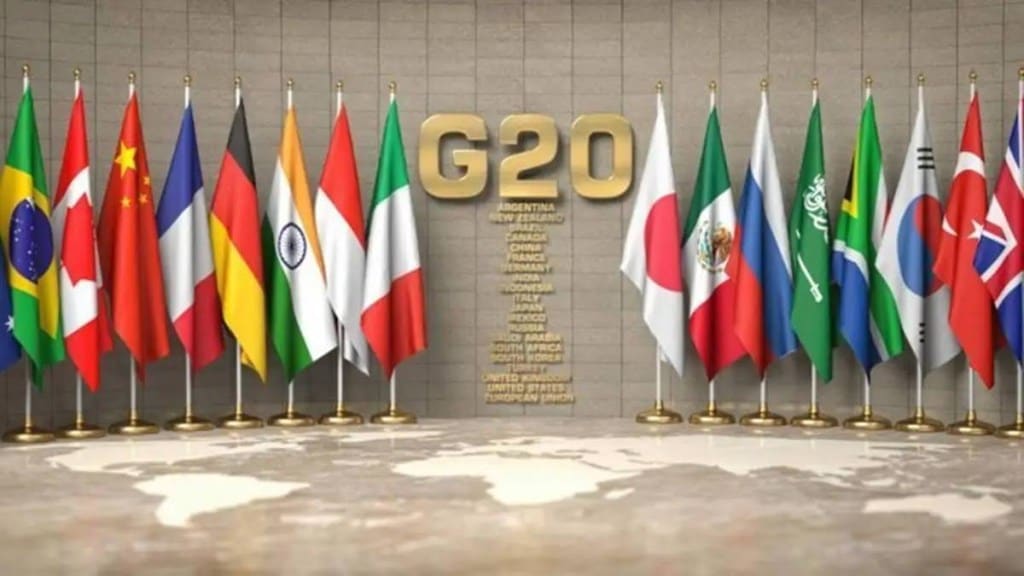By Kumar V Pratap
India will assume the G20 presidency beginning December 2022. G20 countries, in their presidencies, have set the agenda for infrastructure, such as Roadmap to Infrastructure as an Asset class (Argentina, 2018), Principles of Quality Infrastructure Investment (Japan, 2019), InfraTech (Saudi Arabia, 2020), and Financing Sustainable Infrastructure for Recovery (Italy, 2021). The Indian G20 presidency is an occasion for India to set the infrastructure agenda for itself and the world. I believe that India should be flagging the following inter-related themes—reasonable user charges for infrastructure services; autonomous regulation of infrastructure; and asset recycling and brownfield asset monetisation (BAM).
Reasonable user charges for infrastructure services
India has the second largest infrastructure deficit in the world (after Brazil) as it has grown at a rapid pace of over 6% since the early 1990s (which adds to the demand for infrastructure) without commensurate increase in supply. This infrastructure deficit is reflected in, for example, congestion across transport sectors (roads, railways, airports)—the majority of sections of Indian Railways in both the Delhi-Howrah and the Delhi-Mumbai routes have over 150% capacity utilisation, leading to slow average speeds of trains (mainly freight). To improve the supply of infrastructure, one needs to put more resources into infrastructure.
Reasonable user charges are necessary for augmenting infrastructure financing, financial viability of infrastructure service providers, and for environmental and resource use sustainability. Take the case of rapid depletion of groundwater in many areas across the country, partly because of zero or very low user charges being imposed on ground water extractors. This leads to, inter alia, over-use and wastage of a precious resource.
Also Read: G20 pledges coordinated actions for strong global economic recovery
Very often, zero- or low- user charges are justified in the name of the poor that they would be unable to afford them. Studies have shown that provision of piped water supply and grid-based electricity is highly positively correlated with income levels, meaning that the poorest section of the population is largely unconnected to public sources of supply and ends up paying much more from private sources (like water tankers or stand-posts). The policy implication is to provide connection subsidies and not consumption subsidies (which is what low pricing of public water supply amounts to).
Besides the environmental sustainability and resource use efficiency that would emanate from reasonable user prices, this policy priority has immense resource generation potential. Let us take the case of power sector. There is a revenue gap of Rs 0.72 per unit of electricity consumed in the country. The total energy generated in the country in 2018-2019 was 1,547 billion units, of which about 22% was lost in aggregate technical & commercial losses. So, if a cost-recovering tariff is imposed in the power sector, the additional potential revenue generation is to the extent of Rs 870 billion per annum, more than enough to wipe off the entire losses of the power sector.
Autonomous regulation of infrastructure
Much of infrastructure is sunk costs (there is little alternative use of assets like roads, water pipes, etc after provisioning). Therefore, regulatory risks manifested in tariff risks (regulators will not impose cost-recovering tariffs) come into play—as we have seen, in the power sector, there is a loss of `0.72 per unit of electricity consumed in the country.
Though the Indian infrastructure regulators (electricity, telecom, airports, and ports) have decided on a number of knotty issues, their overall record, in common with the rest of the world, is not perfect. This increases risk premium and the cost of capital. As India and the world opens up more sectors to private participation, the private sector would demand autonomous infrastructure regulation.
Here, two lessons, one domestic and the other international, may be instructive. The most happening sector in Indian infrastructure is the road sector (as per World Bank’s Private Participation in Infrastructure database, there are 502 PPP road projects—the highest in the world—accounting for an investment of $92 billion), where there is regulation by contract and the sector does not have an independent sectoral regulator. This goes on to show that an independent sectoral regulator is neither necessary nor sufficient to spawn private participation in infrastructure. The world-wide trend is towards multi-sectoral regulators as the regulatory role (tariff setting and service obligations) is common across infrastructure sectors, and such institutions build regulatory capacity, conserve resources and prevent regulatory capture.
Asset recycling and brownfield asset monetisation
As we have seen, India has the second largest infrastructure deficit in the world. India also has a large stock of brownfield assets across infrastructure sectors. The basic idea of BAM is to augment infrastructure resources through brownfield asset recycling for accelerated greenfield investment by freeing up funds tied up in de-risked brownfield public sector assets such as telecom towers, roads, airports, railway tracks, power transmission lines, power plants, gas and oil pipelines etc, by transferring these infrastructure assets to a trust (infrastructure investment trusts or InvITs) or a corporate structure (toll-operate-transfer, TOT), which receive investment from institutional investors like pension and insurance funds, and high net-worth individuals, against a capital consideration which captures value of future cash flows from these underlying assets. In such transactions, capital value realised is often more than the sum total of discounted cash flows as such arrangements also unlock efficiencies. Many countries including India (National Monetisation Pipeline, 2021), Australia, and the US are working towards expanding the role of BAM.
The above themes are relevant for India and the world and the Indian G20 presidency offers a chance for mainstreaming them to augment infrastructure and its financing.
The author is Senior economic advisor, GoI, and former joint secretary (infrastructure policy & finance), Union ministry of finance Views are personal

